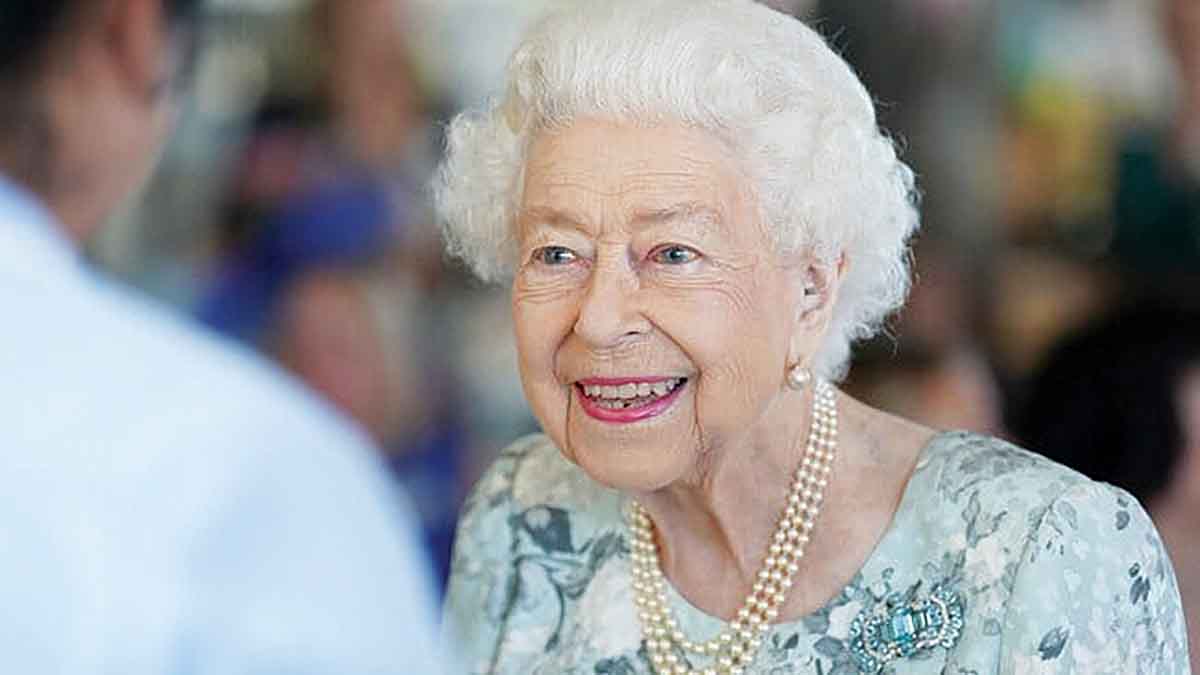Paul Hopkins on the people of Ireland’s affection for the late Queen Elizabeth
Ireland and the Crown have had an on-off relationship going back aeons, a relationship drenched in blood, the murder and mayhem of despots and devil-makers drunk on the audacity of religious megalomania and misanthropy on both sides of a divide that demands no retelling here. But a love/hate affair it has ever been, in a long, unforgiving time of warfare and madness.
Officially, we were supposed to ignore it, the coronation of Elizabeth II that is — meant to be an event of supreme indifference to the citizens of De Valera’s Ireland. Ireland’s Ambassador to London, Frederick Boland, attended but made clear he wasn’t going to enjoy it, and the official Irish response to the affair was what Queen’s University Belfast academic Gillian McIntosh calls “measured”.
Cardinal D’Alton, then Primate of Ireland, issued a statement expressing the hope that the country would be “restored to its natural unity” during the reign of the new Queen.
“There was quite a lot of hostility towards it,” says journalist Mary Kenny, who studied the relationship between the Irish and the British Crown for her book Crown And Shamrock: Love and Hate Between Ireland and the British Monarchy (New Island Books).
Unofficially, of course we loved it. Unofficially, we lapped it up, every detail, every epaulette and cummerbund, every title, regiment and crowned head.
When Queen Elizabeth II ascended the British throne in 1952, her empire from the West Indies to the Far East was in its final stages of decline, having lost the crown’s leading dominion, India, five years prior.
Having reigned for 70 years, she was the longest-serving of any British monarch, beating Queen Victoria’s 63 years. Just this spring, she celebrated a Platinum Jubilee in 2022, marked by four days of festivities. If the two queens were widely popular figureheads, both seen as national grandmothers by the end of their reigns, they ruled over very different Britains. Queen Victoria oversaw a period of industrial and military change – and the rapid expansion of the British Empire to global domination.
Elizabeth oversaw the empire’s diminishment and Britain’s struggle to define itself in the postwar era from a superpower to a bit nation in the British Isles. Her death, at the age of 96, comes at a time of great uncertainty with war having returned to Europe, a major economic crisis looming and threatening to plunge many into poverty, and turbulence in British politics in the wake of Brexit and the pandemic.
At the core of ordinary Irish people’s affection for the late Queen Elizabeth, a remarkable woman in many ways, was “the Irish tradition of being interested in people, clan and family. In dynasty,” says Kenny.
Royal watchers in Ireland — and my own mother was an avid one — followed Elizabeth through many travails, personal and political. We have binged on Netflix’s The Crown. We had shown what Kenny calls a “sympathetic identification” with her as a wife and mother.
Our interest may well have been fuelled by a relative lack of pageantry when first a new republic. The people who provided glamour back then were the Catholic Church. The religious processions of the 1950s were beautiful, exquisite displays, but apart from that and the odd Hollywood film star, there was a vacuum.
So, it was towards Buckingham Palace, Windsor Castle, Sandringham and Balmoral that many of us in the Republic of Ireland turned for our glitz fix. And so it was with Princess Diana, first wife of King Charles III. We Irish did not escape succumbing to her beauty and innocent charm, long before we thought the Brits ‘okay’ after Queen Elizabeth’s address at Dublin Castle in 2011.
Women here admired the Queen, if even secretly, but loved Diana, admired her fashion and looks, respected her motherhood and her many charitable works. The same young women empathised with Diana during her battle with bulimia and depression and with her sad excuse of a marriage.
This writer loved it when she once said: “They say it is better to be poor and happy than rich and miserable, but how about a compromise like moderately rich and just moody?”
We watched the processions and the State occasions, but we followed the family dramas, too. We knew that the Queen Mother loathed the Duchess of Windsor, we felt for Princess Margaret when she wasn’t allowed to marry Captain Townsend, we recoiled when the IRA murdered Lord Mountbatten and many wept unashamedly when they heard of Diana’s death in that Paris car crash in 1997.
The high point of Ireland’s relationship with Queen Elizabeth came with the royal visit of 2011. Once again, it was the human element that won out over political or cultural concerns. Irish people responded to her warmly as a person and were delighted to see her genuine response to us and our country, not to mention the cupla focal. Sinn Féin’s Mary Lou McDonald the other day was fulsome in her praise of Elizabeth’s tole in the process of (relative) peace and reconciliation on the island of Ireland. Likewise, Michelle O’Neill. Taoiseach Micheál Martin generously conceded that there were “those on this island who have lost their Queen”.
Once Elizabeth actually set foot in the country, something changed. The Irish tradition of cead mile failte took over — it’s in our DNA. A common reaction to the visit was that Ireland’s own ceremonial apparatus — the bands, troops and protocol experts — brought it all off so splendidly.
Meanwhile, the new monarch has spoken often of his ‘affinity’ to Ireland, so we can expect more than just one visit from Charles.

















